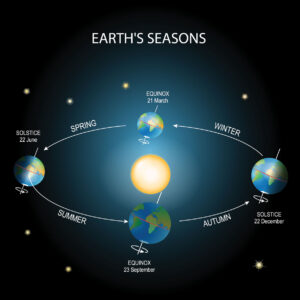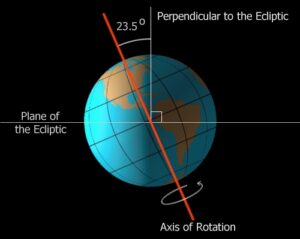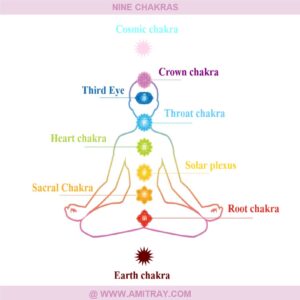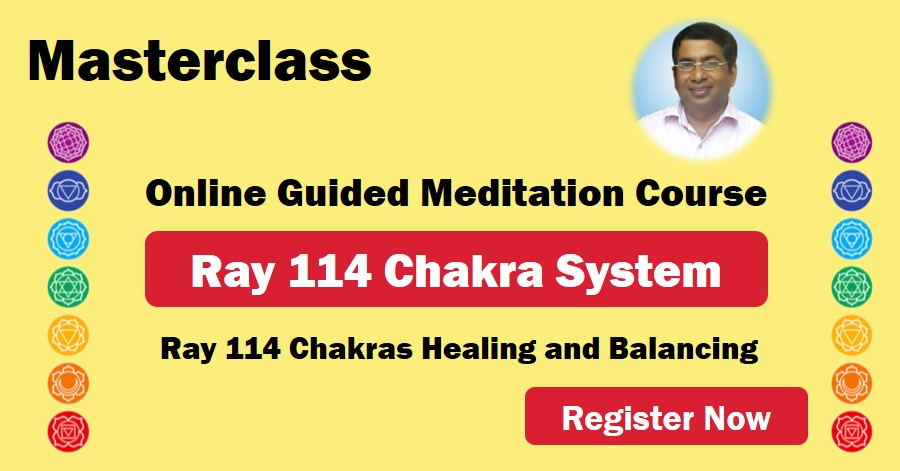Ten Scientific and Spiritual Significance of Navratri
Sri Amit Ray tells us about the significance of Navratri.
Navratri are the NINE special nights to transform the negative energies of life into positive energies. Here we discussed the scientific and spiritual significance of Navratri. How navratri is related to equinox, nine chkaras, nine mantras, fasting, prayer, meditations, virtues, festivals, nature and colors are explained. Navaratri are the nine nights of spiritual festival of India. This is the time to awaken, integrate and harmonize the nine chakras in the mind-body and spirit system. It is the period to connect the individual consciousness with the divine and auspicious collective consciousness.
Recently, some spiritual seekers and researchers asked me about the science and significance of navratri and how this time can be effectively used for the purification of our body and mind. The main significance of Navratri is celebrating the victory of good over evil and above all embracing the spirit of joy and oneness, and leaving behind all that is limiting and hindering our growth as spiritual being.
From the context of social science, navratri is the period of mixing with people, creating new relationships and reviving the old relationships with new vitality. Our hormones regulates our physiological activities and maintains homeostasis in the body. During navratri, our hormonal and inner transformations takes place in different way, which affects different biological cycles.
Awareness meditations about our biological cycles during this period can help you to de-clutter your mind and removes the mental toxins like fear, anger, hatred, addiction, attachment, anxiety and depressions. Celebration and meditation during these nine nights bring joy, bliss, happiness and fulfillment in an easy and natural way without much effort.
Navratri starts when the season changes. Change in the seasons has different effects on your physical, mental, emotional and spiritual level. The divine power controls the movement of celestial bodies. It makes the Earth rotate and revolve around the Sun; causing day and night and climatic changes, creating a perfect abode for sustaining life. Hence, we worship this energy as Mother Goddess. Navratri marks the beginning of the nine-day festival devoted to Goddess Durga. During this period many chakras and nadis get purified.
Navratri commences on the first day of the bright fortnight of the lunar month. It ends with celebrations on the tenth day (dashami) of the fortnight. The dates of the festival are determined according to the lunar calendar and may have some slight regional variation. The two primary Navratris are at the beginning of summer and at the beginning of winter. They are the two important junctures of climatic change.
Read: Navaratri and Durga Mantras for Adoring the Divine Cosmic Power
Goddess Durga is the Cosmic Mother – mother of all creations – full with love and compassion. The Goddess Durga represents all the three times of the past, present and future. She represents the three worlds: gross physical world, mental world and the transcendental cosmic world. She resides in every atom in this universe in the form of material, energy and consciousness. At the highest state she is one with the primordial vibration OM. She is also one with Shiva – the essence of all auspiciousness.
1 Navratri and the Equinox

Equinox and earth seasons
The equinox occurs when the sun is directly in line with the equator. “Equinox” comes from the Latin words “equi” meaning “equal” and “nox” meaning “night.” This implies that there will be equal amounts of daylight and darkness. Equinox literally means “equal night.” And during the equinox, most places on Earth will see approximately 12 hours of daylight and 12 hours of night. At the equator, the sun is directly overhead at noon on these two equinoxes. There are only two times of the year when the Earth’s axis is tilted neither toward nor away from the sun, resulting in a “nearly” equal amount of daylight and darkness at all latitudes.
2. Navratri and Daylight
Earth doesn’t orbit upright, but is instead tilted on its axis by 23.5 degrees. A pole star or polar star is a star, preferably bright, closely aligned to the axis of rotation of the earth. Two solstices occur annually, around June 21 and December 21. The seasons of the year are determined by reference to both the solstices and the equinoxes.
Scientists have known that humans and other mammals have an internal clock that governs our sleep-wake cycles, among other daily functions. Light “resets” this internal clock, so our bodies are in synch with the time of day. Light provides us with non-visual cues that influence things like our pupil dilation, alertness, melatonin levels, and heart rate modulation. Light receptors in the retina of the eyes used to reset our circadian rhythms. Navratri is the period when our circadian rhythms and other biological cycles going to readjust and change. Fasting and meditation during this period purifies the chakras and the nadis in the body.
3. Four different Types of Navratris
There are four different Navratri festivals that happen in India throughout the year. However, Sharad Navratri is the most popular one. The festival is associated to the prominent battle that took place between Durga and demon Mahishasura and celebrates the victory of Good over Evil.
Vasanta Navratri falls on the month of Chaitra (March–April) and it marks the start of the new year in Hindu lunar calendar. It is observed during the waxing phase (Shukla Paksha) of Chaitra month.
Ashad Navratri is observed during the Shukla Paksha (waxing phase of moon) of Ashada month (June–July).
Sharad Navratri is the most important of the Navratris which is celebrated from the ‘pratipada’ (first day) of the bright fortnight (Shukla paksha) of the lunar month of Ashvin. It marks the beginning of winter (September – October) and is called Maha Navratri or simply Navratri.
Pausha Navratri is observed during the Shukla Paksha (waxing phase of moon) in the month of Pausha (December–January).
4. Navratri and the Trees and the Nature
The March equinox, unofficially marking the spring season, is traditionally observed as a time of rebirth and renewal. For this reason, many cultures have celebrated the March equinox as the All around us, trees and plants are ending this year’s cycle of growth. Perhaps they are responding with glorious spring leaves, or a last burst of bloom before summer comes.
5. Navratri and the Colors
One of the major rituals among many is the ritual of Navratri color. Navratri is a festivity of 9 days and is denoted by different colors for each day. For nine days, nine different colors are adopted by the festival of Navratri. Navratri is celebrated with the extreme zeal, passion, color and enthusiasm by the devotees. The nine different colors are held out on nine different days of Navratri to worship Goddess Durga. The nine colors are: Yellow-Green-Grey-Orange-White-Red-Blue-Pink-Purple.
6. Three Purification Cycles in Nine Days
There are three purification cycles during these 9 days. Each cycle is symbolically divided into three cycles of three nights.
Cycle#1: The first cycle is represented by the Goddess Durga, symbolizing a purification taking place mostly in the physical world. This is connected with the physical body and the vital energy body. Fasting during this period purifies the physical body and the vital energy body
Cycle#2: The second cycle is symbolized by the Goddess Lakshmi and promotes the purification of our emotions. This period is connected with subtle body or the astral body. Fasting and meditation during this period removes the emotional knots,
Cycle#3: The third cycle is under the Goddess Saraswati. This is primarily linked to the purification of our mind at the deepest level. It help us to detach ourselves from our false beliefs, which limit us in our perception and prevents us to open ourselves to the recognition of the depth of the Self. This is connected with the purification of the mental and causal / spiritual body.
7. Nine forms of Divine Goddess Durga
The 9 forms or appellations of Goddess Durga are as follows:
Shailaputri: The name literally means daughter of the mountains. Also known as Parvati or Himavati, she is the daughter of Himavan (king of Himalayas). A manifestation of the power or energy behind the Trimurtis, she is depicted as riding a bull and carrying a trident and a lotus.
Brahmacharini: The name literally means one who practices devout asceticism. She is the way to enlightenment or moksha and is depicted in a white sari, carrying a rosary and a water utensil.
Chandraghanta: She gives the strength to fight all evils. She is shown as having a golden complexion with 3 eyes and 10 hands. She rides a lion and carries weapons in her hands. She has a Chandra (crescent) on her forehead in the shape of a ghanta (bell) and hence the name Chandraghanta.
Kushmanda: She is the Goddess of the cosmic egg and is considered as the creator of the universe. She is depicted as having 8 hands holding weapons, rosary, lotus etc. and riding a tiger or a lion.
Skandamata: She is the mother of war, god Skanda or Kartikeya and hence the name Skandamata (‘mata’ means ‘mother’). The chief commander of the divine energies (Devas), in their war against demons, she is depicted as having four arms and three eyes. The Goddess is shown as seated on a lotus or riding a lion and she holds the infant Skanda on her lap.
Katyayani represents Parvati in her warrior stage. When the Gods invoked Mahashakti to protect them from demon Mahishasura. She killed the dreaded demon Mahishasura. She took birth in the home of sage Katyayan and being his daughter she is called Katyayani.
Kaalratri: The destroyer of all darkness and ignorance.
Mahagauri represents Parvati in her phase of recovery. Those who worship her, gets purified in all aspects.
Siddhidatri has all the supernatural powers and is one with Lord Shiva.
8. Awakening the Nine Chakras
 There are nine chakras. Seven chakras are inside the body and the two chakras are outside the body. Chakras are know as the energy center or energy vortexes. Each of nine energy centers line up along the central vertical axis of the human body. The nine chakras are associated with the nine divine power and consciousness. Navratri is the time to integrate and harmonize the internal energy centers with the external energy centers. You must learn the laws of chakra grounding, closing, opening, balancing and connecting. You should not go to crowded locations or locations with negative energies with open chakras.
There are nine chakras. Seven chakras are inside the body and the two chakras are outside the body. Chakras are know as the energy center or energy vortexes. Each of nine energy centers line up along the central vertical axis of the human body. The nine chakras are associated with the nine divine power and consciousness. Navratri is the time to integrate and harmonize the internal energy centers with the external energy centers. You must learn the laws of chakra grounding, closing, opening, balancing and connecting. You should not go to crowded locations or locations with negative energies with open chakras.
9. Nine Mantras for the Nine Days
SHARANYEI TRYMBAKE GAURI NARAYANI NAMOSTHUTE||
9. Nine Virtues to do during Navratri
- Fasting
- Meditation
- Prayer
- Mantra Chanting
- Offer small gifts or food to at least two small girls, preferably girls less than ten years old, as it is believed young girls are avatars of goddess Durga.
- Give food to the people
- Offer food to Cows
- Give water to the trees
- Do some charity work
Nine Core Practices during Navratri
- You can observe fasting during Navratri. Goddess Durga bestows her blessings on you, which brings success and prosperity. It is advised that you should drink more water during the days of fasting. Fruits, milk, home-made juice, etc can be eaten during the day time. However, it would be beneficial to have a single meal in a day, that too after sunset.
- You should get up early in the morning, take bath and get dressed in fresh and clean clothes. You can do early morning meditations.
- You can do micro-meditation-practices during these days, about 5 times per day or more. Stop for a while, close our eyes, breathing deeply three times and observing for one minute what ever manifests to you without judgment, just notice the divine presence.
- If you cannot fast for the nine days, you can fast for any number of days depending on your health and mindset.
- You can do nine chakra balancing meditation during this period. But remember not go to the crowded locations or the locations with negative energies with open chakras.
- During this period you can read or listen chandi patha.
- You can go for complete digital fasting during the nine days.
- You can focus on the purpose of your life and spread positive vibrations to the world. Try to avoid distractions and useless discussions, vain activities during this period.
- Charity is one of the main aspects of Navratri. You can do charity and donation during this period.
- You may adopt periods of silence during the day to re-center yourself.
- You can connect more with the nature through silent walking meditation.
- Follow your heart and see what can help you to expand your love, compassion, divinity and consciousness.
Navratri is the time to explore the new horizons of divinity and building deeper understanding about yourself and the divine cosmic reality. May the divine universal cosmic mother, Goddess Durga, bless you and bring many happiness to your life.
Read more: Chandipath Details
Read more : Navaratri and Durga Mantras for Adoring the Divine Cosmic Power

